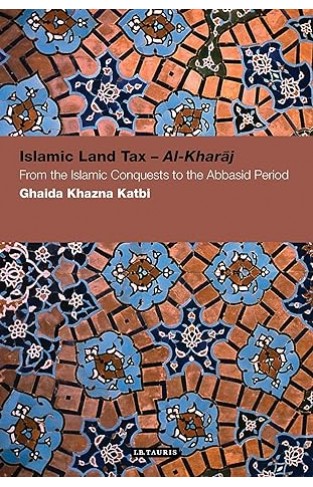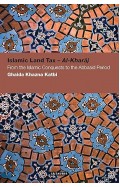- Home
- Books
- Sale
- 11.11 Sale UPTO 90% OFF
- 15% OFF
- Islamic Land Tax - Al-Kharaj - From the Islamic Conquests to the Abbasid Period
Islamic Land Tax - Al-Kharaj - From the Islamic Conquests to the Abbasid Period
By: Ghaida Khazna Katbi
-
Rs 3,612.50
- Rs 4,250.00
- 15%
You save Rs 637.50.
Due to constant currency fluctuation, prices are subject to change with or without notice.
Islamic Land Tax - Al-Kharaj - From the Islamic Conquests to the Abbasid Period
By: Ghaida Khazna Katbi
Rs 3,612.50 Rs 4,250.00 Ex Tax :Rs 3,612.50
Zubin Mehta: A Musical Journey (An Authorized Biography)
By: VOID - Bakhtiar K. Dadabhoy
Rs 472.50 Rs 1,050.00 Ex Tax :Rs 472.50
The Greatness Mindset - Unlock the Power of Your Mind and Live Your Best Life Today
By: Lewis Howes
Rs 3,916.00 Rs 4,895.00 Ex Tax :Rs 3,916.00
How to Understand and Deal with Health Anxiety - Everything You Need to Know to Manage Health Anxiety
By: Katy Georgiou
Rs 2,471.25 Rs 3,295.00 Ex Tax :Rs 2,471.25
Decisionscape - How Thinking Like an Artist Can Improve Our Decision-Making
By: Elspeth Kirkman
Rs 7,496.25 Rs 9,995.00 Ex Tax :Rs 7,496.25
Where Research Begins - Choosing a Research Project That Matters to You (and the World)
By: Thomas S Mullaney
Rs 6,296.25 Rs 8,395.00 Ex Tax :Rs 6,296.25
The Interior Design Handbook - Furnish, Decorate, and Style Your Space
By: Frida Ramstedt
Rs 6,146.25 Rs 8,195.00 Ex Tax :Rs 6,146.25
Beyond Twilight Explore The World Of vampire
By: Manuela Dunn-Mascetti
Rs 276.00 Rs 345.00 Ex Tax :Rs 276.00
The Lost Hero: Heroes of Olympus Book
By: Rick Riordan
Rs 1,705.50 Rs 1,895.00 Ex Tax :Rs 1,705.50
The Hunger but Mainly Death Games: A Parody
By: Bratniss Everclean
Rs 581.75 Rs 895.00 Ex Tax :Rs 581.75
Dr Sigmundus: The Cracked Mirror The Promises of Dr Sigmundus
By: Brian Keaney
Rs 1,361.75 Rs 2,095.00 Ex Tax :Rs 1,361.75
The Greatness Mindset - Unlock the Power of Your Mind and Live Your Best Life Today
By: Lewis Howes
Rs 3,916.00 Rs 4,895.00 Ex Tax :Rs 3,916.00
How to Understand and Deal with Health Anxiety - Everything You Need to Know to Manage Health Anxiety
By: Katy Georgiou
Rs 2,471.25 Rs 3,295.00 Ex Tax :Rs 2,471.25
Decisionscape - How Thinking Like an Artist Can Improve Our Decision-Making
By: Elspeth Kirkman
Rs 7,496.25 Rs 9,995.00 Ex Tax :Rs 7,496.25
Where Research Begins - Choosing a Research Project That Matters to You (and the World)
By: Thomas S Mullaney
Rs 6,296.25 Rs 8,395.00 Ex Tax :Rs 6,296.25
The Interior Design Handbook - Furnish, Decorate, and Style Your Space
By: Frida Ramstedt
Rs 6,146.25 Rs 8,195.00 Ex Tax :Rs 6,146.25
No recently viewed books available at the moment.
Zubin Mehta: A Musical Journey (An Authorized Biography)
By: VOID - Bakhtiar K. Dadabhoy
Rs 472.50 Rs 1,050.00 Ex Tax :Rs 472.50
Islamic Land Tax - Al-Kharaj - From the Islamic Conquests to the Abbasid Period
By: Ghaida Khazna Katbi
Rs 3,612.50 Rs 4,250.00 Ex Tax :Rs 3,612.50
The Greatness Mindset - Unlock the Power of Your Mind and Live Your Best Life Today
By: Lewis Howes
Rs 3,916.00 Rs 4,895.00 Ex Tax :Rs 3,916.00
How to Understand and Deal with Health Anxiety - Everything You Need to Know to Manage Health Anxiety
By: Katy Georgiou
Rs 2,471.25 Rs 3,295.00 Ex Tax :Rs 2,471.25
Decisionscape - How Thinking Like an Artist Can Improve Our Decision-Making
By: Elspeth Kirkman
Rs 7,496.25 Rs 9,995.00 Ex Tax :Rs 7,496.25
Where Research Begins - Choosing a Research Project That Matters to You (and the World)
By: Thomas S Mullaney
Rs 6,296.25 Rs 8,395.00 Ex Tax :Rs 6,296.25
The Interior Design Handbook - Furnish, Decorate, and Style Your Space
By: Frida Ramstedt
Rs 6,146.25 Rs 8,195.00 Ex Tax :Rs 6,146.25













-120x187.jpg?q6)















-120x187.jpg?q6)



